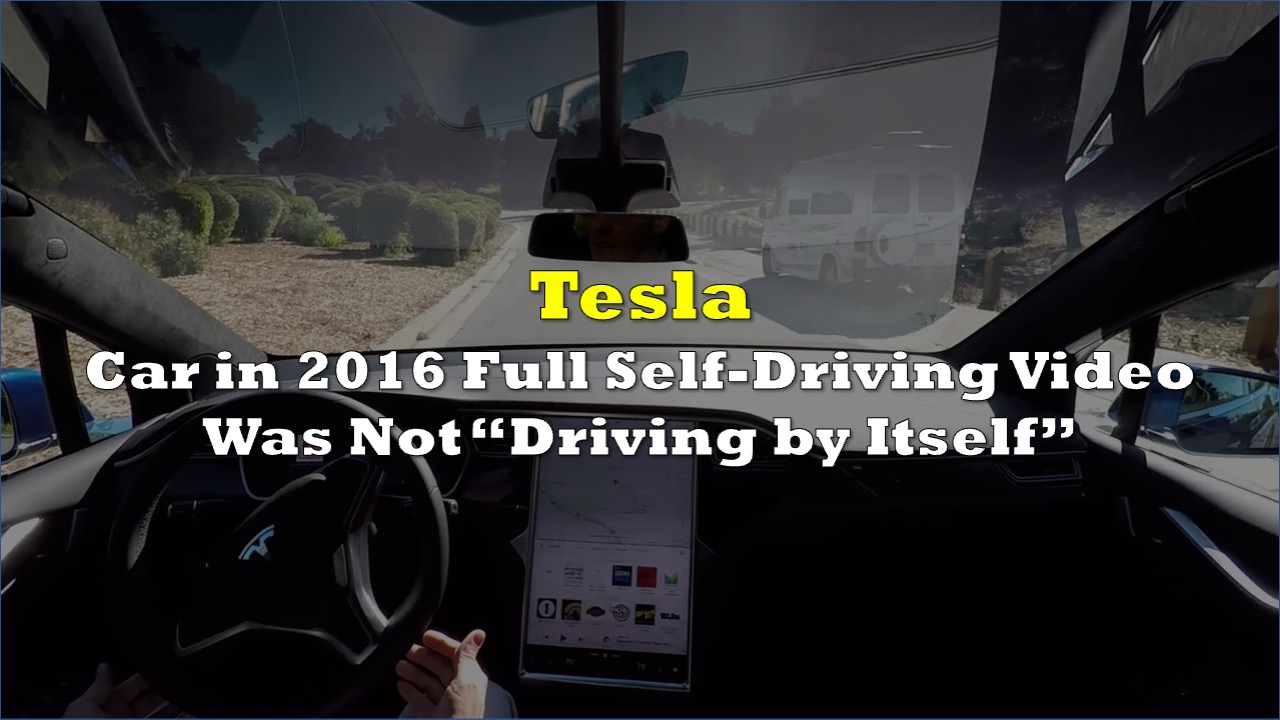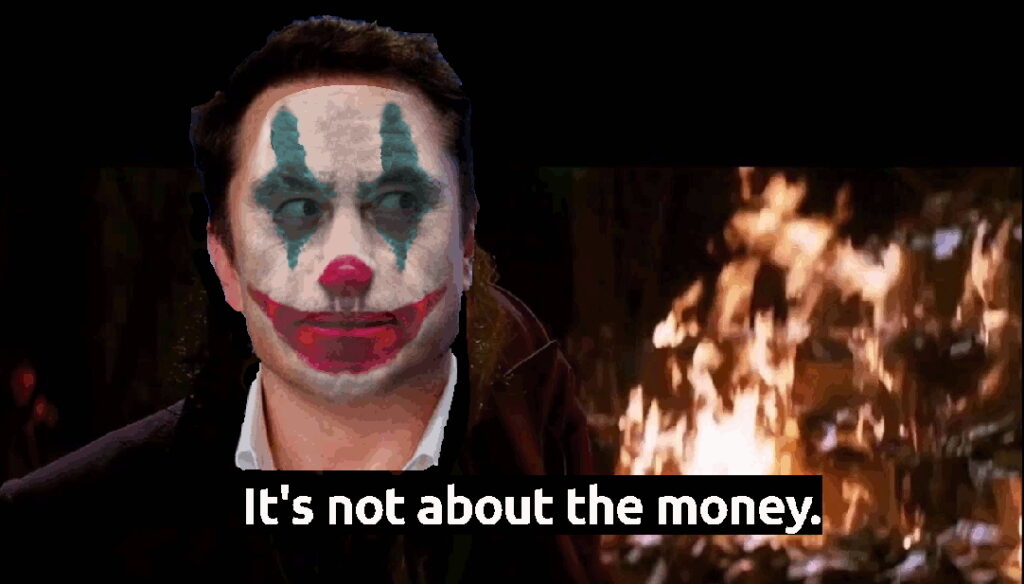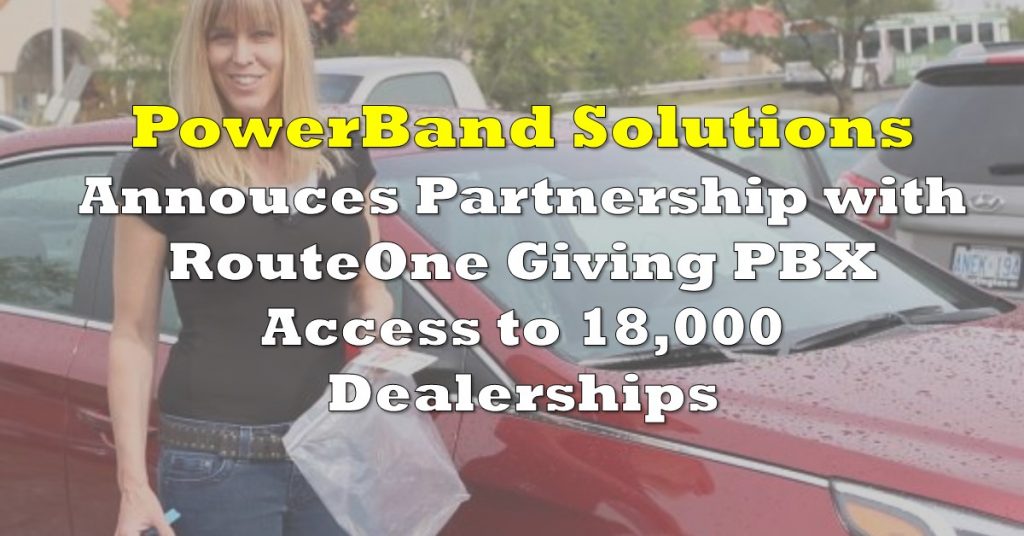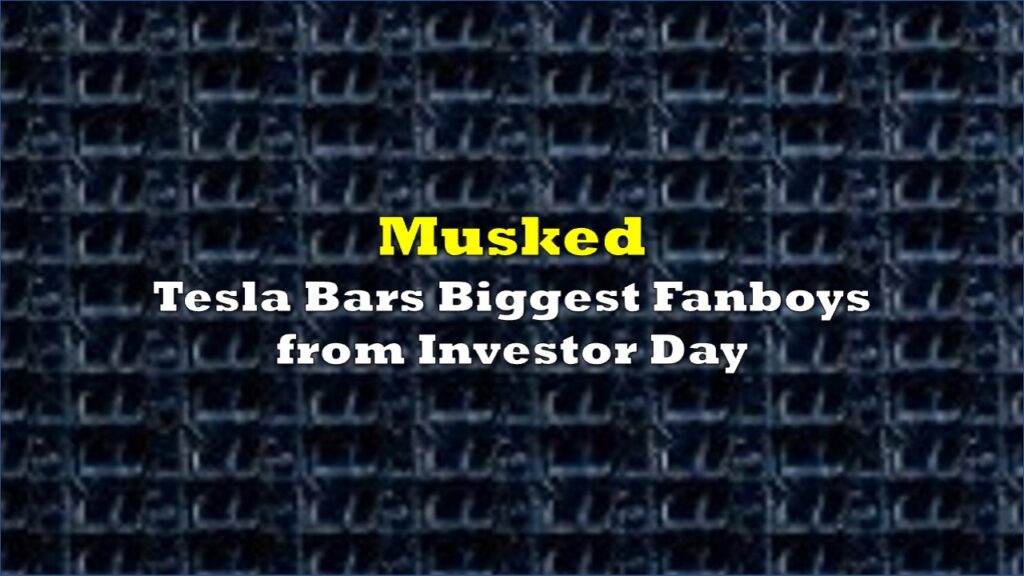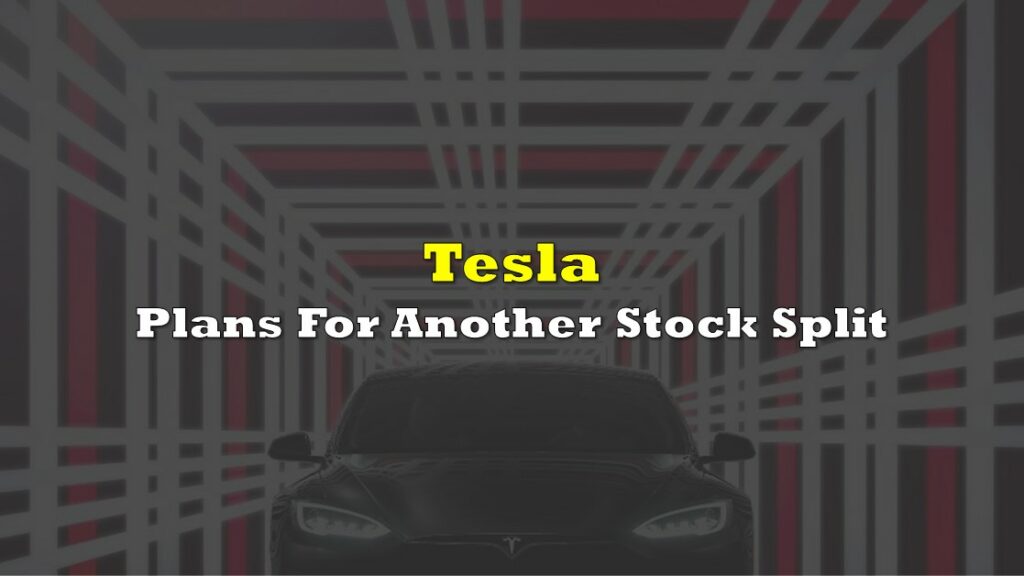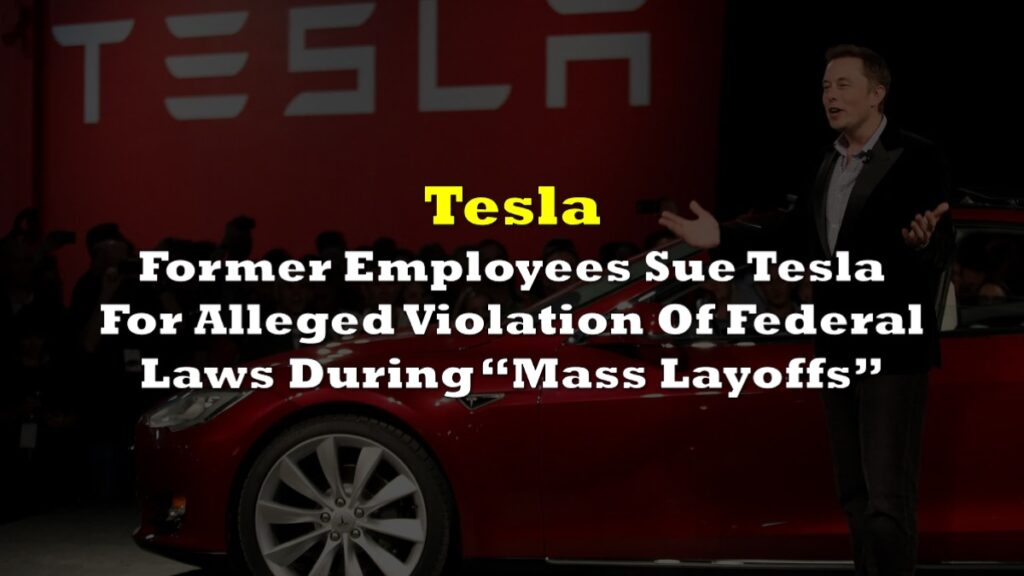Tesla’s 2016 “Full Self-Driving Hardware on All Teslas” video was essentially debunked by the director of the electric carmaker’s Autopilot software division in a recent deposition.
The video in question, seen below, features a Tesla driving from a house in Menlo Park to what used to be the Tesla headquarters in Palo Alto. The “driver” is seen barely touching the steering wheel as the car drives itself, following traffic lights and avoiding obstacles. After the man in the driver’s seat leaves the vehicle, it parks itself, at some point even stopping while a man crosses the street.
Ashok Elluswamy, who’s currently head of Tesla’s Autopilot engineering, said that the video was meant to “portray what was possible to build the system,” and not to “accurately portray what was available for customers in 2016.”
It can be recalled that Tesla CEO Elon Musk tweeted that “Tesla drives itself” when he shared the video in 2016, without properly disclosing that the video was still a demonstration of what Full Self-Driving (FSD) could look like in the future, as Elluswamy clarified.
Tesla drives itself (no human input at all) thru urban streets to highway to streets, then finds a parking spot https://t.co/V2T7KGMPBo
— Elon Musk (@elonmusk) October 20, 2016
Elluswamy’s deposition, which took place in June 2022 (full transcript here), is part of a lawsuit against Tesla over a 2018 crash that killed Wei “Walter” Huang. Huang’s Model X had the Autopilot engaged when it crashed into a highway barrier in Mountain View, California.
It’s unclear how the video was shot, but Elluswamy’s deposition shows how the car’s FSD capabilities on the video were staged, with the engineer describing the following instances:
- There were some points that the driver had to intervene, contrary to “no human input at all.”
- “The demo was specific to some predetermined route,” and that “it was using additional premapped information to drive,” meaning the system, at the time, did not perform the fundamental concept of Autopilot being able to navigate a route based on Vision input, and instead relied on human input as the route was previous 3D-mapped prior to the demo.
- “The production version of Autopilot as of November 2016 did not have the capability to accelerate in response to a traffic light changing from red to green,” nor was it capable of stopping at a stop sign, contrary to what was shown in the video.
- The car crashed into a fence while parking, but that cut did not make it to the video.
- “The Summon feature … requires the driver to be somewhat close to the car,” and not inside a building as was demonstrated — or “on the other side of the country.”
Interestingly, Elluswamy seems to “not recall” many of the other instances surrounding the creation of the 2016 video, including whether Musk was told that the car had crashed, if the car didn’t accelerate on its own when the light turned green, or if in which instances he was inside the vehicle.
Tesla critic and author of “Ludicrous: The Unvarnished Story of Tesla Motors” Ed Niedermeyer also pointed out several crucial concepts Elluswamy answered “I do not know” to.
A few concepts that @CMU_Robotics masters degree holder Ashok Elluswamy doesn't know about: operational design domain, minimal risk conditions, the importance of having human factors team members when developing a human-in-loop system 🤯🤯🤯 pic.twitter.com/Ml7h0LRjUk
— E.W. Niedermeyer (@Tweetermeyer) January 16, 2023
The Huang case is just one of the many legal issues that have been brought against Tesla and its self-driving claims. The Department of Justice has been investigating the American electric carmaker since 2021 over a number of high-profile fatal crashes involving Autopilot. The department is looking into how Tesla and Musk have been promoting the feature with claims like “Tesla drives itself,” and whether these unsupported claims have misled consumers, regulators, and the company’s investors.
California, driven by Tesla’s “Full Self-Driving” claims, in December passed a law that prohibits carmakers and dealers from claiming a car has self-driving capabilities when it does not.
READ: Ford’s Mike Levine Throws Shade At Musk And Tesla’s Full Self-Driving Option
Contrary to what the 2016 video and the name “Full Self-Driving” suggest, the feature doesn’t mean that the car can autonomously drive itself, even today in 2023. On its website, the company says that the FSD system is designed to assist a “fully attentive driver” with steering, braking, speed and lane changes, but its “currently enabled features do not make the vehicle autonomous.”
Information for this briefing was found via The Verge, Reuters, Twitter, and the sources and companies mentioned. The author has no securities or affiliations related to this organization. Not a recommendation to buy or sell. Always do additional research and consult a professional before purchasing a security. The author holds no licenses.

